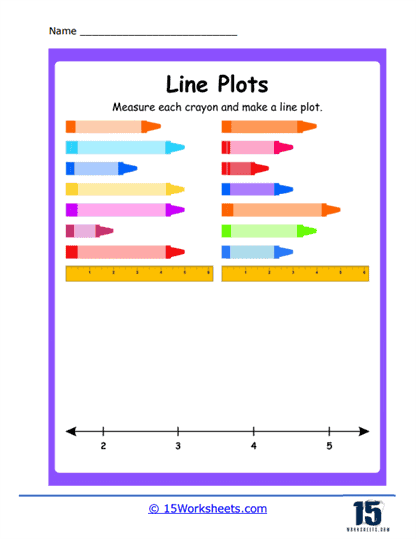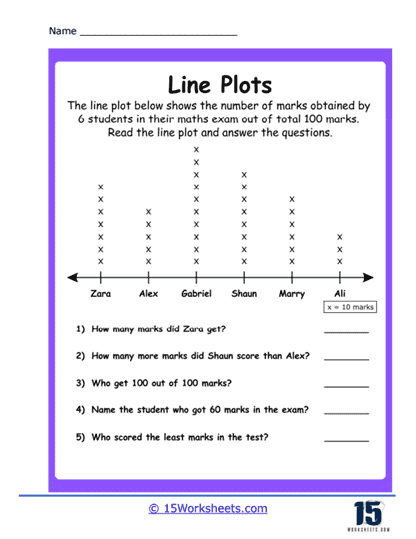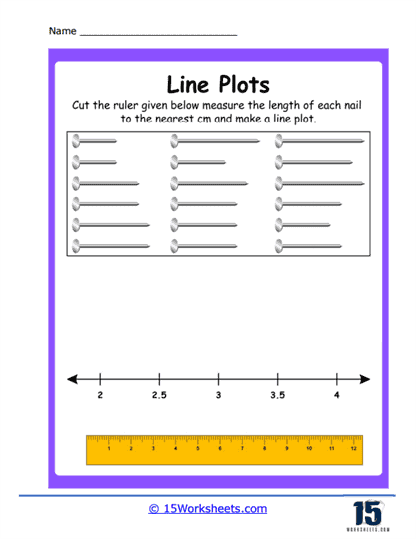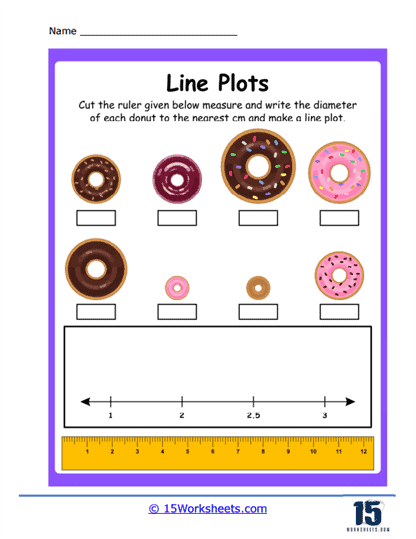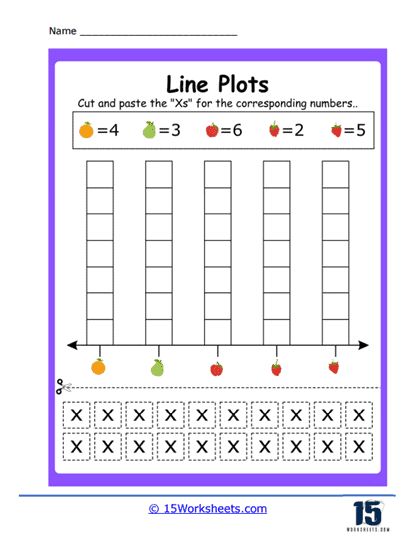Line Plots Worksheets
About These 15 Worksheets
Visualization is a powerful tool in the world of math and statistics. It transforms abstract numbers into comprehensible visuals, aiding in understanding, analysis, and decision-making. One such visual tool is the line plot. These worksheets are will help you to teach students about line plots, from understanding what they represent to creating and analyzing them.
Our line plots worksheets are specifically crafted sheets, either digital or printed, that contain exercises related to line plots. These worksheets aim to introduce students to the concept of line plots, teach them how to interpret and draw them, and develop their analytical skills related to data presented in this format. A line plot, also sometimes referred to as a dot plot, uses dots, crosses, or other markers above a number line to indicate the frequency of each value in a dataset.
Types of Exercises on These Worksheets
Reading Line Plots – These are basic exercises that provide students with pre-made line plots and ask them simple questions to ensure they understand how to read the plot. This is useful for introducing students to the line plot format. Students can identify and understand the components of a line plot and the data it represents.
Creating Line Plots – Students are given a small dataset and are asked to create a line plot representing that data. This can engage students in the process of converting raw data into a visual representation. Students learn how to organize data and represent it visually in the form of a line plot.
Interpreting Data from Line Plots – Exercises where students are given a line plot and must answer questions about the data, such as identifying the mode, determining the number of data points, or spotting outliers. This can enhance analytical and observational skills. Students can learn how to draw conclusions and insights from data presented in line plot format.
Comparing Data Using Line Plots – Students might be given multiple line plots and asked to compare the data sets. They might need to identify which set has greater frequency of a particular value or which data set has a specific characteristic. This is helpful to teach comparative analysis using visual data representations. This can enhance skills in comparing and contrasting data from visual sources.
Using Line Plots to Solve Problems – Word problems that require students to either create or use line plots to find a solution. For instance, a problem might describe a scenario of a class’s test scores and then ask questions about averages, medians, or ranges. To apply theoretical knowledge in practical scenarios. This types of problems provide students with experiences with real-world applications of line plots and analytical problem-solving skills.
Line Plots with Larger Data Sets – As students progress, they might be given larger data sets and asked to create or interpret more complex line plots. These worksheets challenge students and prepare them for real-world scenarios where data sets might be extensive. This improves proficiency in handling and analyzing substantial amounts of data visually.
When Would I Use a Line Plot?
A line plot, also known as a dot plot or line chart, is a type of graph that displays data points on a number line, often used in statistics and data analysis. It is especially useful when you want to visualize the distribution and frequency of data points for relatively small sets of data. Here are situations when you might use a line plot:
Simple Data Visualization – Line plots are straightforward and easy to read. If you have a small dataset and want a quick visualization to understand its distribution, a line plot is a great choice.
Highlighting Specific Data Points – If you want to emphasize individual data points or values in a dataset, line plots can be particularly useful since each data point is represented distinctly.
Showing Frequency – For datasets where certain values repeat, a line plot can visually depict the frequency of each value. The height of the stacked dots for each value indicates its frequency.
Analyzing Trends Over Time – While line plots and line charts are different, the terms can sometimes be used interchangeably. If you’re referring to a line chart, it’s useful for showing changes over a continuous interval or time period. For example, stock prices over time, monthly sales, or temperature changes across days would be suitably represented using a line chart.
Identifying Clusters and Gaps – Line plots allow you to quickly see where data is clustered and where there might be gaps or outliers.










